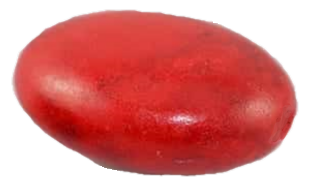
Sea Bamboo, often admired for its vibrant red hues and organic origins, is a material that bridges the natural world and human craftsmanship. While not technically bamboo, its unique beauty, history, and spiritual associations have made it a sought-after treasure. This comprehensive article delves into the origins of its name, composition, geographical sources, and its profound cultural and mystical significance.
Origins of Its Name and Alternate Names
The name “Sea Bamboo” reflects its marine origins and its visual similarity to land-based bamboo. Despite this name, it is not a plant but a type of coral from the ocean floor. Its resemblance to bamboo stalks has inspired this name, while its vibrant red hue connects it to its alternate name, “Red Coral.”
In scientific terms, Sea Bamboo is referred to as Corallium rubrum, a species of coral that has been revered for centuries.
Composition and Physical Characteristics
Sea Bamboo is composed of calcium carbonate, secreted by coral polyps over time. These tiny marine animals build protective exoskeletons that form the coral’s structure. The coral is dyed and polished to achieve its iconic deep red colour, although some naturally occurring specimens retain a subtle, organic red tone.
Physical Characteristics:
- Appearance: Cylindrical or rod-shaped, often resembling stalks of bamboo.
- Colours: Typically bright red, but can also be found in white, pink, or golden hues in its natural state.
- Texture: Smooth and polished, often used in jewellery and decorative objects.
Varieties include natural coral and treated or dyed coral, with the latter being more common in contemporary markets.
Geographical Locations
Sea Bamboo is harvested from warm ocean regions with abundant coral reefs. Key locations include:
- Mediterranean Sea: A significant source of red coral, including Corallium rubrum.
- Pacific Ocean: Found around Japan, Taiwan, and the Philippines.
- Indian Ocean: Notably along the coasts of India and Sri Lanka.
- Australian Waters: Coral reefs near the Great Barrier Reef yield some Sea Bamboo specimens.
Historical Usage and Archaeological Finds
Sea Bamboo has a long history of use, with archaeological evidence tracing its prominence back thousands of years. Ancient Egyptians valued red coral as a protective talisman, believing it was imbued with the blood of the gods. The Romans used it in jewellery and amulets, associating it with health and prosperity.
In medieval Europe, coral was carved into rosaries and religious icons, as it was believed to ward off evil and bring blessings. During the Renaissance, artists and craftsmen incorporated Sea Bamboo into exquisite works of art and ornamental designs.
Today, Sea Bamboo remains a popular material in jewellery, with beads, pendants, and bracelets showcasing its timeless appeal.
Interesting Facts
- Sea Bamboo is not a plant, despite its name; it is a coral species formed in marine environments.
- Its striking red colour symbolises vitality, passion, and energy in many cultures.
- Red coral has been featured in traditional medicine systems, such as Ayurveda and Chinese medicine.
Folklore, Superstition, Legends, and Tales
Sea Bamboo has inspired rich folklore and superstition. In Greek mythology, coral was said to have formed from the blood of Medusa, spilled when Perseus decapitated her. This association with transformation and protection gave coral a sacred status.
In many coastal cultures, Sea Bamboo is believed to protect sailors and fishermen from shipwrecks and oceanic dangers. The material’s bright red colour is thought to resemble lifeblood, enhancing its symbolic role as a protective and life-affirming talisman.
Legends from the Mediterranean tell of coral being a gift from Poseidon, the god of the sea, to ensure safe voyages and prosperity. Similarly, in Indian mythology, red coral is connected to Mars, representing courage, strength, and vitality.
Mystical Healing Properties
Sea Bamboo is revered for its metaphysical properties:
- Emotional Healing: Encourages courage and resilience in times of adversity.
- Physical Healing: Associated with blood circulation and reproductive health in traditional beliefs.
- Spiritual Healing: Said to enhance creativity, passion, and connection to nature’s energies.
Astrological Links and the Chakra System
Sea Bamboo is linked to the Root Chakra, the energy centre associated with stability, security, and grounding. Its vibrant red colour amplifies these qualities, fostering strength and vitality.
Astrologically, Sea Bamboo is connected to the planet Mars and resonates with zodiac signs like Aries and Scorpio, enhancing their natural traits of courage, passion, and intensity.
Use as a Birthstone and Wedding Anniversary Gift
Sea Bamboo is not officially recognised as a birthstone but is sometimes associated with March due to its red coral origins. As a wedding anniversary gift, it is a symbolic choice for the 35th anniversary, representing resilience and enduring love.
